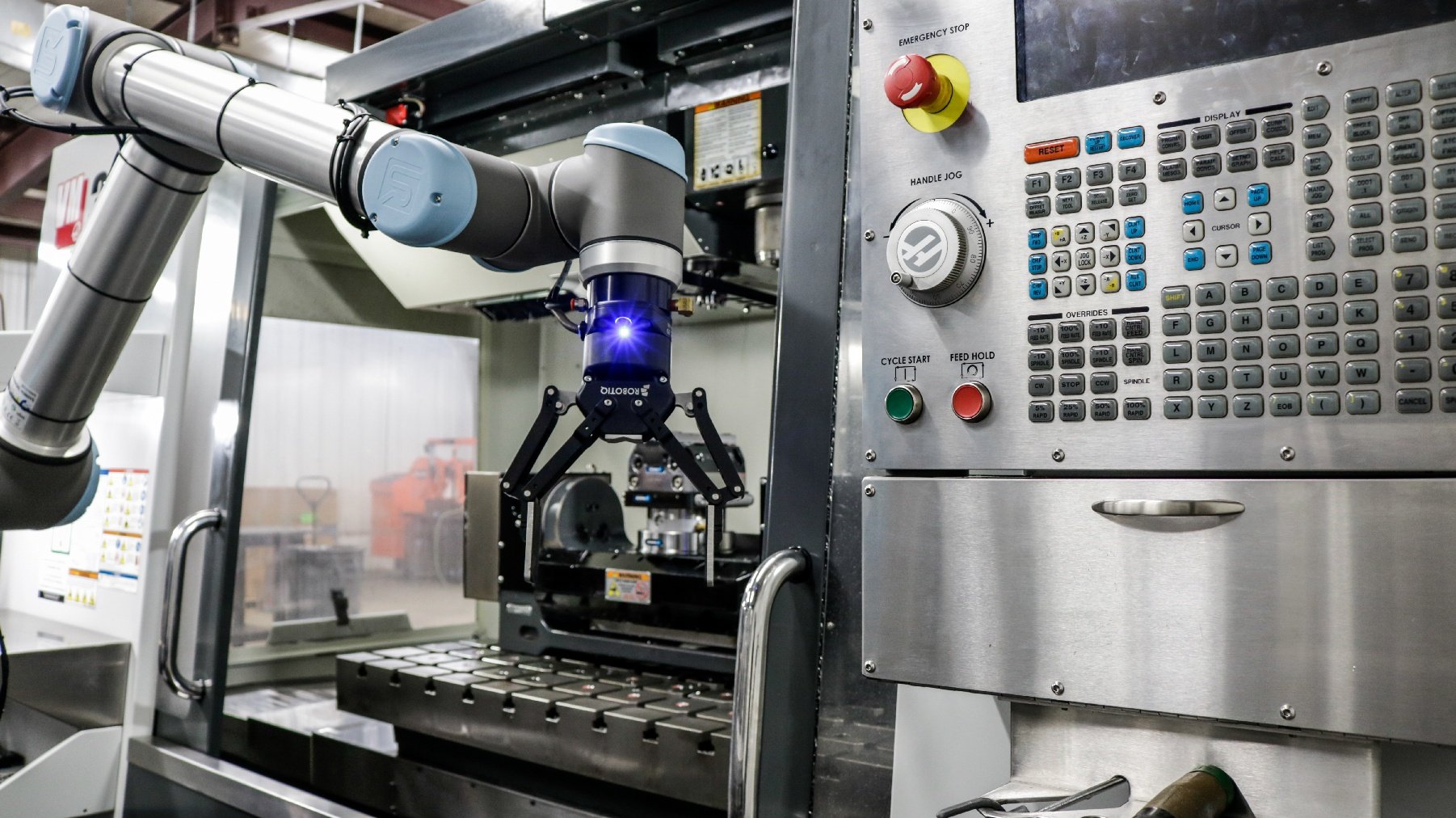Why reinvent your gripper setup every time?
Too many integrators still design each end effector from scratch, losing time, margin, and consistency with every project.
What if your team could reuse one proven gripper toolkit across every robot brand like Fanuc, Doosan, Omron, and go from installation to first pick in minutes?
A standardized end-effector strategy lets you deliver faster, simplify maintenance, and scale your business without adding complexity.
It’s not about limiting flexibility, it’s about working smarter, not harder.
Discover how to standardize your gripper strategy and turn repeatability into your biggest advantage.
Why robotic integrators should standardize their gripper strategy
If you work as a robotic integrator, you understand how projects slow down fast with all those details. New robot brands come up. Unique part geometries appear. Specialized end effectors add more hassle.
A gripper change might seem straightforward in plans. It often turns into hours of extra engineering work. You deal with re-wiring. You handle troubleshooting too.
The best approach to regain predictability in your workflow involves standardizing your end-effector strategy. You use a common set of reliable grippers. They work as plug-and-play options across various robots. This cuts down integration time. It simplifies support efforts. It helps your business grow quicker.
What is end-effector standardization?
Your end effector serves as the robot’s hand. The gripper interacts with the product in every cycle.
Projects demand new gripper types. They require adapter plates. They need I/O setups. Your team ends up recreating the same processes for each build.
Standardization means:
- Selecting a small, trusted set of grippers that can cover 80–90% of your use cases.
- Designing universal mechanical and electrical interfaces to reuse these tools.
- Building a repeatable process for setup, programming, and maintenance.
Standardization does not limit creativity. It reduces unnecessary friction. Your engineers focus on performance. They work on cycle times.
3 major benefits of a standardized gripper strategy
1. Save time and reduce integration costs
Every integrator has lost hours adapting a new gripper to a robot brand.
Different pinouts, mounting patterns, and communication protocols create unnecessary work.
By using a standard gripper platform like Robotiq’s adaptive electric grippers (2F-85, 2F-140, or Hand-E):
- You reuse your mechanical drawings and control templates across brands like Fanuc, Doosan, or Omron.
- Integration becomes faster and more predictable.
- Engineering hours shrink while project margins grow.
2. Simplify maintenance and field support
After a cell is running, custom grippers quickly become service headaches:
different spare parts, new programming, and longer downtime.
A standardized toolkit means:
- One set of spares to stock.
- Consistent service and documentation.
- Faster technician response times.
Technicians gain deep familiarity with fewer tools, while customers enjoy more reliable, easily supported systems.
3. Scale your integrations business efficiently
As your integrator business grows, you’ll handle more robot brands and industries.
Without a consistent approach, complexity grows faster than your team.
Standardization helps you:
- Reuse your design library and robot code templates.
- Train new engineers faster.
- Deliver more projects without increasing overhead.
Consistency becomes your competitive advantage.
Plug-and-play grippers: The key to easy standardization
The biggest enabler of standardization is plug-and-play technology.
Modern grippers like the Robotiq 2F-85 or 2F-140 connect instantly with many popular collaborative and industrial robots.
They feature:
- Universal mounting systems
- Pre-configured communication drivers
- Intuitive setup interfaces
No need for custom coding. Configuration takes minutes, not hours — making multi-brand integration truly practical.
How to start standardizing your grippers
- Audit your current tools — list the grippers and brands you use most.
- Select a core toolkit — 2–3 models that cover most part types and sizes.
- Document your templates — wiring diagrams, I/O configs, robot code.
- Train your team — make standardization part of onboarding and SOPs.
- Educate customers — explain that standardized tools reduce risk and lead time.
Start small. Pilot the approach on one or two projects, measure the impact, and expand from there.
FAQs about grippers and standardization
🦾 What’s the best robotic gripper for integrators?
Adaptive electric grippers are the most versatile. They can handle parts of different sizes and shapes, making them ideal for flexible, high-mix automation.
🤖 Can one gripper work across multiple robot brands?
Yes. Many plug-and-play grippers, like Robotiq’s, connect to Fanuc, Doosan, Omron, and other robots using ready-to-use mechanical kits and URCaps or similar software packages.
💰 How does gripper standardization lower costs?
It reduces engineering hours, spare part diversity, and troubleshooting time. Integrators often save 15–30% per project through reuse and faster commissioning.
📈 What’s the ROI on standardizing grippers?
Most integrators recover their initial effort within 2–3 projects, as repeatability cuts both design and service time.
🧩 Does standardization reduce flexibility?
No. Adaptive grippers are modular and configurable — you gain flexibility within a standardized platform instead of reinventing setups for each project.
The bottom line
Standardizing your end-effector and gripper strategy isn’t just about tools — it’s a way to make your integration business more efficient, predictable, and scalable.
By building around universal, plug-and-play grippers that work with all major robot brands, you eliminate repetitive engineering, improve uptime, and deliver a consistent customer experience.
That’s how top integrators turn technical complexity into a repeatable business advantage — one reliable gripper at a time.
![]()

The post “How to standardize your end-effector strategy: A practical guide for robotic integrators” by Michelle Vallée was published on 10/29/2025 by blog.robotiq.com












-1.jpg)











